How Women Legislate
by Sue Thomas
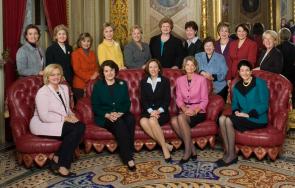 An enduring question about women in politics is whether they operate differently from men. If so, do these differences affect government policies and procedures, especially those that flow from local, state, and national legislatures? Regardless of whether or not women bring change to policies and procedures, are there other reasons why it matters that our elected government looks like those it governs?
An enduring question about women in politics is whether they operate differently from men. If so, do these differences affect government policies and procedures, especially those that flow from local, state, and national legislatures? Regardless of whether or not women bring change to policies and procedures, are there other reasons why it matters that our elected government looks like those it governs?
Many believe that having women in legislative office matters because equal opportunity to participate in political decision-making is central to legitimacy, trust in government, and institutional stability; because women have differing life experiences from men; because those experiences can translate into distinctive ways of addressing and prioritizing political issues; and because symbolism counts—children can be what they see.
Women have been active in politics throughout our nation’s history, although they have been legislators only in the latter half of it. In 1916, Jeanette Rankin of Montana became the first woman elected to the US House of Representatives. The number of women has risen very slowly from that time. Today, women are 19.6 percent of the US Congress or 105 seats of the 535 that make up the House and the Senate. At the state level, in 1971, women held 4.5 percent of legislative seats across the nation; today women are 24.5 percent. Although we don’t have figures for women on the nations’ city councils or county boards of supervisors, women are18.9 percent of mayors in cities with at least 30,000 people—and, in many cities, mayors are legislators as well as executives.
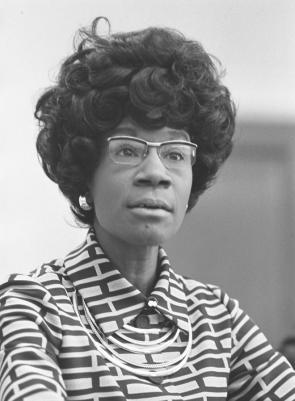 Altogether, women’s presence in US legislatures has grown a great deal, although not always steadily, and there have been setbacks. And, at all levels, women still are less than one quarter of those who legislate on our behalf. The situation is worse for women of color. Today, women of color make up only 6.4 percent of Congress and 5.4 percent of all state legislators. That means that the story of women’s political inclusion is one of enduring challenges to equal access to and participation in US politics.
Altogether, women’s presence in US legislatures has grown a great deal, although not always steadily, and there have been setbacks. And, at all levels, women still are less than one quarter of those who legislate on our behalf. The situation is worse for women of color. Today, women of color make up only 6.4 percent of Congress and 5.4 percent of all state legislators. That means that the story of women’s political inclusion is one of enduring challenges to equal access to and participation in US politics.
Exploring women’s status in legislative politics sets the stage for the central question of this essay: whether women who have served and who currently serve in legislatures make a difference in substance and procedure. Careful evaluation of this question for more than 40 years shows that women have distinctive points of view about how best to serve their cities, states, and the federal government. The rest of this essay focuses on: women legislators’ (1) political worldviews, (2) types of professional activity, (3) attention to issues, (4) priorities and voting records, (5) leadership styles, and (6) role in getting other women elected.
Women legislators have distinctive political perspectives. They tend to be more liberal than men and more supportive of a range of issues including women’s issues—defined either traditionally or from a feminist perspective—such as affordable child care, funding for women’s health care, paid sick leave from work, equal pay, and prevention of violence against women.
Ideology must be combined with activity for women legislators to make a difference in their jobs. Holding a position is not enough. It is important that women legislators participate in all the activities that come with their role, both legislative and constituency oriented. On the legislative side, women are as active as men in bill introduction and passage, committee work, legislative bargaining, and presentations on the floor of their chambers. Constituency service is also critical to women legislators and, in general, they devote more time to it than men. They are also more likely to pay particular attention to women and minorities, both among their constituents and beyond district or state boundaries.
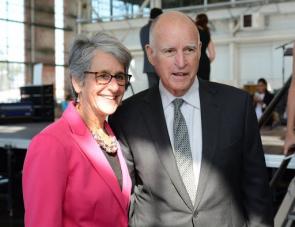 What about women legislators’ priorities in lawmaking and their effectiveness in pursuing their interests? Women are more likely than men to sponsor and vote for women’s, children’s, and family issues legislation. And, in general, women are as successful in passing their legislative priorities. An example of female legislators’ efforts on behalf of women is the 2015 California Fair Pay Act sponsored by California state senator Hannah-Beth Jackson. This legislation was created to reduce and eliminate gender disparity in wages for women and men who do the same job. It was a priority of the California Legislative Women’s Caucus and earned votes from both Republican and Democratic women. Once signed into law, the Fair Pay Act became one of the toughest equal pay laws in the nation.
What about women legislators’ priorities in lawmaking and their effectiveness in pursuing their interests? Women are more likely than men to sponsor and vote for women’s, children’s, and family issues legislation. And, in general, women are as successful in passing their legislative priorities. An example of female legislators’ efforts on behalf of women is the 2015 California Fair Pay Act sponsored by California state senator Hannah-Beth Jackson. This legislation was created to reduce and eliminate gender disparity in wages for women and men who do the same job. It was a priority of the California Legislative Women’s Caucus and earned votes from both Republican and Democratic women. Once signed into law, the Fair Pay Act became one of the toughest equal pay laws in the nation.
It is important to emphasize that, even though women legislators have distinctive policy priorities, their focus is not limited. Female legislators are as involved as men in the full range of issues from infrastructure to foreign policy; from the economy to criminal violence. The key is that women expand policy agendas in legislatures by bringing new issues and solutions to the table.
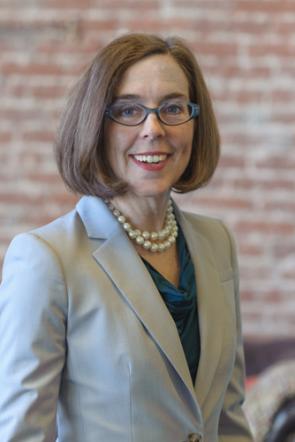 How women in legislatures lead when they rise to be committee chairpersons or minority or majority leaders highlights their differences from men. Women are more likely to foster cooperation, build consensus, encourage team building, enhance communication, share power, and rely on long-range planning. Former Oregon senate leader and current governor Kate Brown has said that women are less inclined than men to engage in partisan infighting and confrontation and more interested in pursuing solutions to problems.
How women in legislatures lead when they rise to be committee chairpersons or minority or majority leaders highlights their differences from men. Women are more likely to foster cooperation, build consensus, encourage team building, enhance communication, share power, and rely on long-range planning. Former Oregon senate leader and current governor Kate Brown has said that women are less inclined than men to engage in partisan infighting and confrontation and more interested in pursuing solutions to problems.
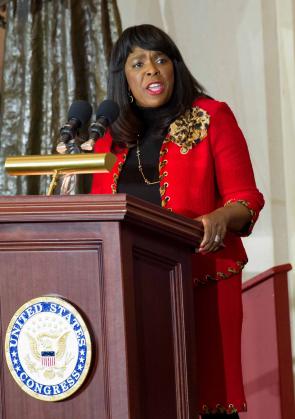 Women legislators are particularly active in efforts to bring more women to the table. Many encourage other women to run, help them fundraise for campaigns, and, once in office, mentor them to be effective legislators. Representative Terri Sewell of Alabama was recruited to run for her House seat by a former legal colleague, Kirsten Gillibrand. At that time, Gillibrand was a member of the House from New York (she is now a US senator). From
Women legislators are particularly active in efforts to bring more women to the table. Many encourage other women to run, help them fundraise for campaigns, and, once in office, mentor them to be effective legislators. Representative Terri Sewell of Alabama was recruited to run for her House seat by a former legal colleague, Kirsten Gillibrand. At that time, Gillibrand was a member of the House from New York (she is now a US senator). From 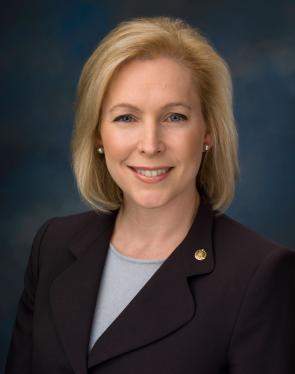 the moment Sewell agreed to run for the seat, Gillibrand became heavily involved in mentoring by giving advice on consultants, campaign tactics, and fundraising. Now, they team up on legislation in Congress.
the moment Sewell agreed to run for the seat, Gillibrand became heavily involved in mentoring by giving advice on consultants, campaign tactics, and fundraising. Now, they team up on legislation in Congress.
To be sure, women’s distinctive legislative voices are not universal. And, they are more likely to arise when women are members of the party in power in their legislatures, have seniority, hold leadership positions, and work in governing bodies with more inclusive rules and power structures. The political era in which they serve also matters a great deal. Today, the majority of female officeholders at the federal and state levels are Democrats, as that party’s issue positions are presently more consistent with equal opportunities for women.
The emergence of women’s distinctive legislative voices is also dependent on how gender intersects with race, ethnicity, and sexual orientation. Although women legislators have long reported that they face disparate obstacles in political life, women of color and lesbians face even greater obstacles to achieving legislative success than their counterparts. Examples come from African American state legislators who report that, even when they have achieved formal positions of power, such as committee chairpersonships, they can be excluded from informal power structures.
In sum, although women legislators are still only about one-quarter of those who make policy, diversity among the women who represent us is lacking, and gender-based obstacles to effectiveness still exist. Whether this is a function of being a minority among political officeholders or a reflection of women’s wider status in society, or both, we cannot know. Whether these patterns will continue if women reach representational equality is another unknown. For now, it is clear that, all else equal, when women achieve legislative office, they make a difference by broadening and deepening the inclusivity of the laws that govern us and providing role models for those who come after them.
Sue Thomas, PhD, is senior research scientist at the Pacific Institute for Research and Evaluation (PIRE). Among her research specialties are women, politics, and policy. Two of her books are on women officeholders and candidates: How Women Legislate and Women and Elective Office: Past, Present and Future. Before joining PIRE, Dr. Thomas was Associate Professor of Government and Director of Women's Studies at Georgetown University.









































































